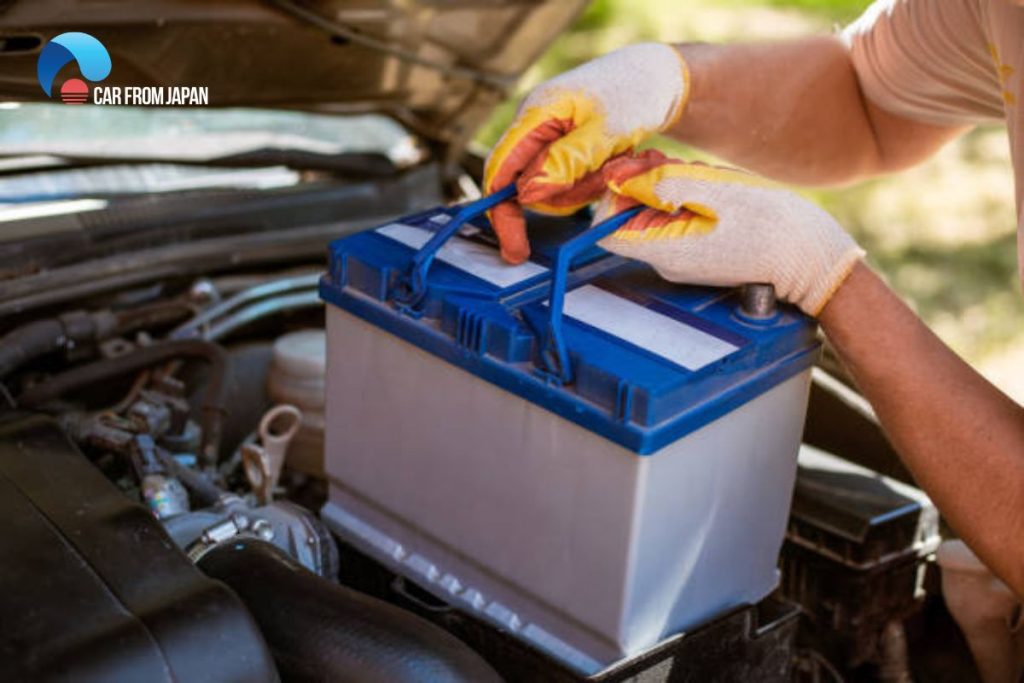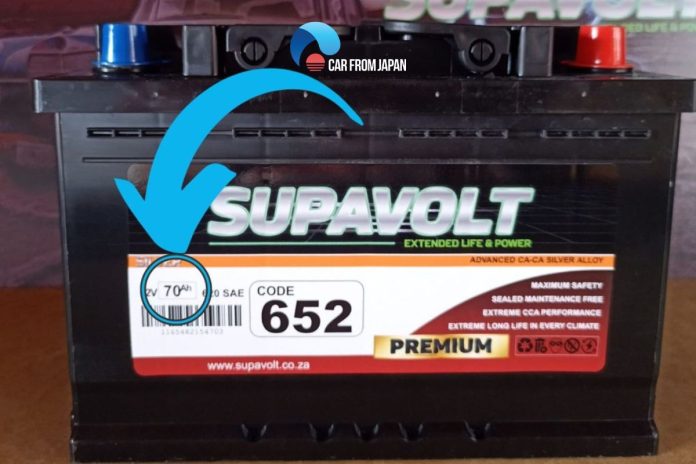Two key factors determine your battery’s capabilities: CCA (Cold Cranking Amps) and Ah (Ampere-hours). What is an Ah and CCA battery meaning? Why do you need to convert CCA to Ah?
This article will equip you with a practical formula to convert between these two essential metrics, allowing you to fully understand your battery’s capabilities!
Contents
What Are Cold Cranking Amps (CCA) and Ampere Hours (Ah)?
The CCA rating refers to a battery’s ability in low temperatures, or more precisely, how efficient it is in kicking an engine off when the weather is cold.
As simple as it sounds, it’s clear that this rating is more important when you live in a cold region where the temperature often drops beyond zero degrees.
From a technical perspective, this rating indicates the amp number that a 12V battery can deliver for 30 seconds straight under 0°F.
The battery has to maintain at least 7.2V of power during this period. A battery with a higher CCA rating means that it provides a greater starting power.
The amp, on the other hand, is the measurement of the electron flow and current within a conductor. One Ampere refers to one coulomb of electrical charge that transmits all across the conducting item within a second.
The Ampere rating is the battery operation threshold that gives an estimation of the battery charge. From this rating, you can calculate how long the unit will last without recharging.
A battery unit will have this rating written out on a label. The measurement unit is either Ampere Hour (Ah) or Milliampere-hour (mAh).

Why Do You Need to Convert CCA to AH?
If you live in a cold region, the cold cranking ampere rating is useful in determining the better battery for low-temp conditions. The rule of thumb is the higher the rating, the higher the capacity and power.
Understanding the relationship between CCA and Ah and the conversion formula offers several benefits:
- Choosing the right battery: You need to convert CCA to amp hours to find a battery’s capacity. A great number of units use the CCA rating to refer to the power of starting an engine at a certain temperature range, typically between 30°F and 32°F. You can choose a more powerful, better battery by knowing the starting power, but the CCA to Ah conversion is necessary for knowing its capacity.
- Battery maintenance and troubleshooting: By monitoring your battery’s CCA and Ah ratings over time, you can identify potential issues and address them before they lead to breakdowns.
- Cost savings and efficiency: Choosing the right battery and maintaining it properly can extend its lifespan, saving you money on replacements and ensuring reliable performance.
How To Convert CCA To Amp Hours?

When you purchase a new car battery based on the CCA values, you will need to convert it to Ah. The problem is there is no direct correlation between these values. You won’t get a single formula to make the conversion.
Worry not! You can still get an approximate if not the exact value. The rule of thumb is to divide the CCA by a 7.25 constant.
Some manufacturers may provide their own formulae. If you find one in the owner’s manual, use that. Otherwise, the following strategy may work.
For example, you need to calculate the amp hours in a 740 CCA battery. One straight formula is.
Ah x 7.25 = CCA
It means multiplying the Ah value with a constant of 7.5 to get the equivalent CCA value. For 200 Ampere hours, the CCA rating will be 1450.
But you want to convert CCA to Ah, the opposite given in this formula. In that case, you need to work this formula around to find the Ah value.
Ah x 7.25 = CCA
Ah x 7.25/7.25 = CCA/7.25
Ah = CCA/7.25
So, if you purchase a 740 CCA battery, its Ah value will be:
Ah = 740/7.25
Or, Ah = 102
This 740 CCA or 102 Ah battery will run 12.75 hours when running at 8 amps of voltage or 10.2 hours at 10 amps of voltage. The higher the CCA in battery rating, the more the Amp value of a battery.
FAQs on CCA To Ah
Is CCA more significant than Ah?
While Ah is able to give power over a long period of time, CCA is able to deliver power over a brief period of time (bursts, as stated above for automobile starting).
What are the differences between cold cranking amps (CCA) vs. cranking amps (CA)?
Simply said, cranking amps refer to the quantity of electricity (power) needed for your car’s engine to start in either regular or marine conditions.
CCA indicates the amount of power needed for a 12-volt battery to start a car engine at 0 °F (-18 °C) for approximately 30 seconds without dropping below 7.2 volts. CCAs are therefore more appropriate for low-temperature environments.
The usable life of a battery in moderate temperatures (between 64°F and 86°F) is often measured using CAs. They cannot, however, foretell how well a battery would function in extremely hot or cold circumstances.
The remaining usable life of a battery may be accurately estimated using CCA. As a result, it offers a way to gauge how effectively a battery will operate at various temperatures.
What does a battery’s strong CCA rating mean?
A battery with as few as 150 CCAs can be used to start a compact automobile.
A battery with 400 to 500 CCAs is necessary for larger vehicles like pickup trucks and SUVs. Batteries with CCA values of up to 1150 are available.
Can I use a battery with a greater CCA in my car?
In your car, you are permitted to install a battery with a greater CCA rating.
However, as higher CCA batteries are more prone to leakage and failure in hotter regions, this is only advised for cooler climes.
Additionally, take in mind that a battery with a higher CCA rating can occasionally be too big to fit in the battery tray of your automobile.
Will a battery with a higher cold cranking amp survive longer?
A battery with a higher CCA rating might be more trustworthy and have a longer lifespan.
Additionally, you do not need to periodically replace it. The materials of the battery, however, affect how long they will last.
Check out this video from Johnnysshop to know how to test you battery health and CCA in seconds!
Final Words
Both CCA and Ah ratings are important. The CCA – will help you understand if the battery is suitable for cranking the engine in a certain low-temperature condition and the Ah gives an idea about the lifespan of the battery.
By mastering the conversion formula, you can make informed decisions about your car battery, maximizing its performance and making it easier to find the correct replacement when the car battery goes bad.



